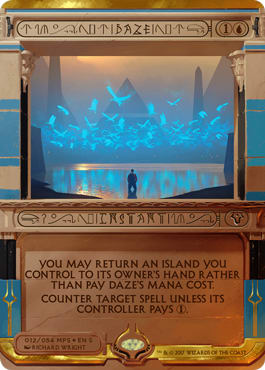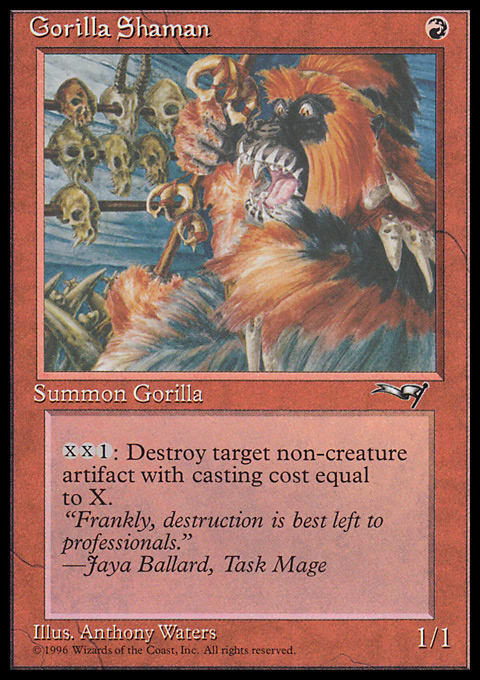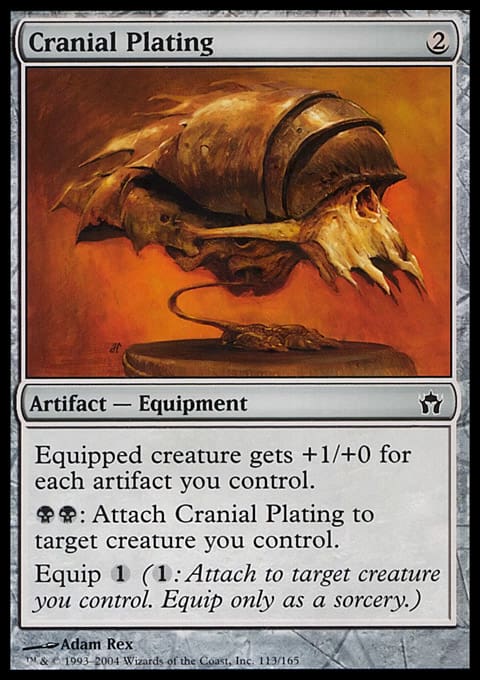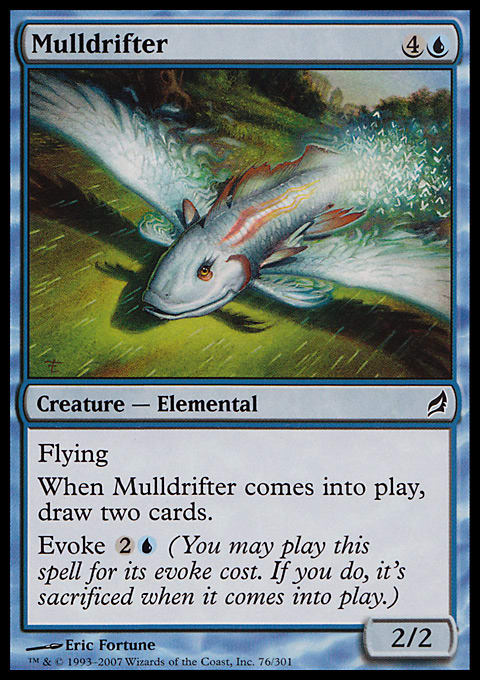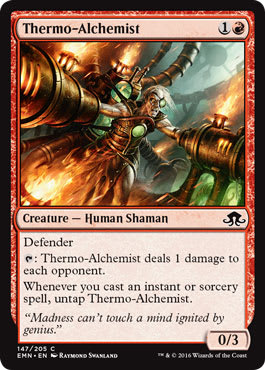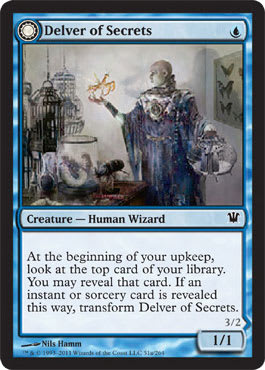This series is long overdue. The recent articles from Reid Duke covering Legacy for Channel Fireball gave me the kick I needed to start a similar series for Pauper.
Why now? The ban of Peregrine Drake has reinvigorated the format. Looking only at league participation it is easy to see the format is healthier; since the ban, Pauper has grown by around 100%. Yet despite Pauper’s presence on Magic Online and in the greater consciousness of the game I believe it is still misunderstood. My intent with these articles is to provide a broad introduction to the format and explore what makes Pauper unique as well as encourage you to play.
So I guess we better start with . . .
What is Pauper?
Simply put, Pauper is competitive Magic played exclusively with commons.
If only it were that easy.
Pauper got its start on Magic Online as a way for a group of friends to compete against each other on a budget. On the old official Wizards forums they would organize tournaments for donated prizes (Player Run Events, or PREs) and started the Pauper Deck Challenge (or PDC). Originally, PDC was divided into 16 week seasons with a playoff at the end of each series. The players themselves would decide upon the banned and restricted list through discussion and votes.
Over time the number of PDC events multiplied and each series had its own season and championship. Eventually older set were added and the split between PDC and Standard PDC came into being. In 2008 Pauper became an officially sanctioned format on Magic Online, complete with an official banned list.
Online Pauper grew with single elimination tournaments, larger challenges, and other offerings. While support has waxed and waned with the stability of the platform, Pauper has proven itself to be a mainstay of Magic Online and now thrives thanks to the League play option.
While Pauper did start as an extreme budget format the release of Duel Decks made that notion a thing of the past. Cards like Serrated Arrows, Snuff Out, Gush, Daze, and even Gorilla Shaman all appeared in deck products making them relatively rare and expensive. Once Pauper allowed these cards in, by virtue of being common, the budget element became secondary to the zeitgeist of the format: competitive Magic played exclusively with commons.
It still is not that simple. The burgeoning (and truthfully exploding) paper scene has created another wrinkle. There are staple cards in the format online — Chainer's Edict and Battle Screech — that have never seen a common printing in the physical realm. Similarly there are cardstock commons — Hymn to Tourach, Sinkhole, Desert, Goblin Grenade — that never bore a black expansion symbol as a digital object. While the rules engine online governs the format there, the real world is subject to the whims of different organizers.
I’ll use this space to come out in favor of the Online legality list. There is just more raw data on this version of the format than any other and it has proven to be, at least recently, vibrant and healthy. While it may be a pain to reference it in the paper world, rendering some cards useless, I see this as no different than running a Stronghold Ensnaring Bridge or The Dark Blood Moon in Modern. So for the remainder of this series when I talk about Pauper I mean the Online legality. I encourage those of you with paper playgroups to follow this list as well.
Pieces of the Puzzle
So now that we’ve established the card we will take some to discuss what’s there; and, almost as importantly, what isn’t.
Let’s start with the banned list. Cranial Plating was the founding member due to its strength in Affinity and it does not look to be coming off anytime soon. Frantic Search soon joined due to its ability to generate mana for Storm decks. These two were joined by a pair of Storm cards — Grapeshot and Empty the Warrens — as well as Invigorate (which gave Infect a reliable turn two kill). The next round saw another Storm card, Temporal Fissure, join the ranks alongside Cloudpost. Temporal Fissure could cast a one sided Obliterate while Cloudpost, combined with Glimmerpost, made aggro a thing of the past. Treasure Cruise was printed and shortly thereafter banned. Finally, Cloud of Faeries and Peregrine Drake found their way on to the list due to their dominance in hard to disrupt combo decks.
By virtue of being based around commons Pauper is largely filled with staple effects. Burn, removal, counters, creatures — things that if they were missing from an expansion people would notice. With the majority of history of the game at our disposal, Pauper often finds the cheapest version of these effects as well. Lightning Bolt, Groundswell, Tragic Slip, and others all see heavy play for just this reason. Efficient creatures also tend toward the lower end of the curve with cards like Foundry Street Denizen and Young Wolf leading the charge. The high density of cheap spells and creatures makes aggressive decks enticing and often quite strong.
That is not to say that control is dead. Another staple of the common slot are value creatures — Chittering Rats and Mulldrifter — and these form the backbone of many decks that take a longer view of things. When these cards are paired with cheap answers or countermagic the game can drag on until one of the 2/2s deals the final blow. Control received a boon recently in the Khans of Tarkir Gain Lands. Not only do these cards fix mana but they also provide a buffer to help blunt the aggro assault.
Speaking of, the mana available is perhaps the least understood aspect of Pauper. Without access to enter the battlefield untapped dual lands or fetchlands that allow lands to come into play ready to be used decks that use multiple colors often have to invest time in setting up their mana base. The Gain Lands bolster this plan and the recent printing of Ash Barrens has made three color decks a reality. As more of these options become available the type of decks seeing play also expands. Currently Pauper makes good use of not only the Gain Lands, but the Ravnica Bounce Lands, Evolving Wilds, and Ash Barrens.
Combo decks in Pauper look different. The heavily spell based Storm Combo has been banned out of the format while the loop enabling Cloud of Faeries and Peregrine Drake have also been axed. Instead Pauper combo decks these days rely heavily on creatures. Nivix Cyclops and Kiln Fiend combine with cheap spells and Temur Battle Rage for a deck that can kill on turn three. Affinity combines the pairing of Atog and Fling with a solid aggressive base. Even Elves, lacking the ability to tutor up a Craterhoof Behemoth, can spew out a ton of tokens thanks to Lys Alana Huntmaster and draw a dozen cards with Distant Melody. Combo finds a way even if it does not resemble decks traditionally bearing that moniker.
Pauper is missing some elements that appear in other formats. The most obvious one is the lack of Planeswalkers. Their absence changes how decks function as there is no real replacement of their multitude of effects. Broadly, cards that generate a persistent effect once in play are also rare in the format of commons. I discussed this a few weeks ago and the reality is there are very few spells that can do something every turn. Thermo-Alchemist is perhaps the most popular, but Curse of the Pierced Heart, Curse of the Bloody Tome, and Grim Harvest come to mind. Decks using Archaeomancer and ways to recur it have come into vogue as a way mimic persistent effects. Without these decks that are not all in on the damage have to take a slightly different approach to winning the game.
Similarly there is a paucity of strong finishers for control decks. While there are strong early threats and decent value creatures there are very few cards that can come down and end the game in one fell swoop. Gurmag Angler is perhaps the best singular threat in the format but it can be handled easily by many of the answers in the format. Point removal has largely outpaced threats in Pauper and there are very few sweepers. Boards can get gummed up and the lack of a windmill slam finisher is one of the defining elements of Pauper.
Sweepers in Pauper are conditional at best. They almost exclusively hit smaller creatures in the vein of Electrickery or Shrivel. Crypt Rats can go as large as you want but it comes with a steep price. Evincar's Justice is getting its day in the sun while Swirling Sandstorm and Claws of Wirewood still strive to see regular play. There are very few spells that punish players for going wide but that does not mean that an army of tokens is immediately the best possible threat. These decks often have to go all in early and be hamstrung if a sweeper hits at the wrong time.
Blue Elephant
There is one element of Pauper I have avoided discussing in this article until now. Given the fact that Pauper draws on the entirety of Magic and given past biases it goes without saying (yet still needs to be said) that Blue is far and away the best color in the format. It has access to some of the best countermagic ever in Counterspell and Mana Leak. It can play cheap card draw and filtering with spells like Accumulated Knowledge and Ponder. Blue has one of the best threats for a control deck in Spire Golem and a creature good enough to see play in Vintage: Delver of Secrets.
Basically, Blue can do it all.
Delver ? Pauper | Ahuacatl, 5-0 Pauper League
- Creatures (20)
- 4 Delver of Secrets
- 4 Faerie Miscreant
- 4 Ninja of the Deep Hours
- 4 Spellstutter Sprite
- 4 Spire Golem
- Instants (14)
- 1 Deprive
- 1 Logic Knot
- 2 Daze
- 2 Gush
- 4 Counterspell
- 4 Snap
- Artifacts (1)
- 1 Bonesplitter
- Lands (17)
- 17 Island
- Sideboard (15)
- 2 Annul
- 2 Curse of Chains
- 1 Dispel
- 4 Hydroblast
- 3 Serrated Arrows
- 3 Stormbound Geist
Delver is the baseline deck in the format. It has long been either the most popular (or a close second) deck. If a deck fails the Delver, test, as in it cannot beat the Blue menace, one better have a good reason for bringing it to the party. Delver features cards that are too powerful for Modern in Ponder and Preordain, with the former being restricted in Vintage. Gush is banned in Legacy and is part of multiple Vintage engines. The power is there.
Delver of Secrets is a solid threat, especially when it is backed up with Spellstutter Sprite. Faerie Miscreant provides velocity while Ninja of the Deep Hours allows Delver a chance rebuy Miscreant or Sprite while also acting as persistent card advantage. Spire Golem holds down the fort before turning sideways to end game.
Counterspell is the best at what it does and no deck uses it better than Delver. Daze, Logic Knot, and Deprive all help on the spell front while Spellstutter Sprite does similar work as a creature. Vapor Snag and Snap help to keep the path clear while Ponder and Preordain help to stitch the deck together.
If you play Pauper you’re going to see a Delver deck. But take another look at the deck — does it look like draft chaff? Delver helps to illustrate a major misconception about Pauper. Namely, not just any pile of commons is viable. Instead the format has true limiting factors and decks are capable of doing some abjectly powerful things. Over the next few weeks I look forward to sharing them with you.
















